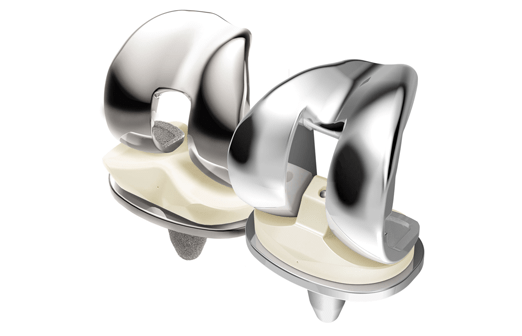
I am back home after about 5 days spent a Lahey Hospital getting a new knee. It’s made of Titanium and should not need repair during my lifetime. It didn’t come with a lifetime guarantee, but given my age, it should be quite good for the rest of my life. My stay was uneventful, unless you consider replacing one’s knee a big deal. Although this operation has become quite commonplace and as routine as ever major surgery can be, it is quite miraculous. In on Monday; out of Friday, walking to car from the Hospital exit.
The one thing about it that no one really tells you in advance is the pain involved. It is certainly the most painful experience of my life. The pain might be tolerable if not for the PT specialists who insist that you both bend and extend the knee beyond the range that probably was normal for you, pre-operation. Today, things seem to have settled down quite a bit, well within the effective limits for a tiny oxycodon tablet. After just a few days with this drug, it is easy to see the path to serious addiction that captures so many.`
With some great coaching from the visiting PT specialist, I am managing to get up from and back down to bed, and a variety of chairs. It’s all in the way you throw your weight around. I had a vision, I would not get my head out from under the the bed sheet, until he showed me that standing could be almost effortless and pain-free if one captured the laws of physics, that is, using the weight of th body to tilt itself so that a slight push off the bed would bring me to a almost standing position.
I am a lot closer to flourishing after the operation in the sense of being more mobile and pain free so that I can pursue caring acts with more ease and less resistance that an expectation of pain creates. I wasn’t thinking about how to look at this process thought a sustainability lens, but as an afterthought, here are a few items to think about. I did not think to get a footprint analysis of the knee replacement process. Made of titanium, the joint would have a lot more embedded energy that the bone it replaced. The five-day hospital stay must have a terrible footprint. The wastebasket was filled to overflowing with single use detritus several times a day. Given the prevalence of hospital-associated-infections, perhaps the waste is worth it if carefully compared to the cost of extra treatment should a patient become infected.
So how does this procedure do in any kind of sustainability examination. I would say, pretty good, in spite of all the consumption that is involved. That’s primarily because the outcome is measured as an improvement of the quality of life. Health economists have ways of monetizing this, but their measures are not what matters to sustainability-as-flourishing. All the pain will disappear and the quality improvements will kick in for the rest of my life. Not too bad.